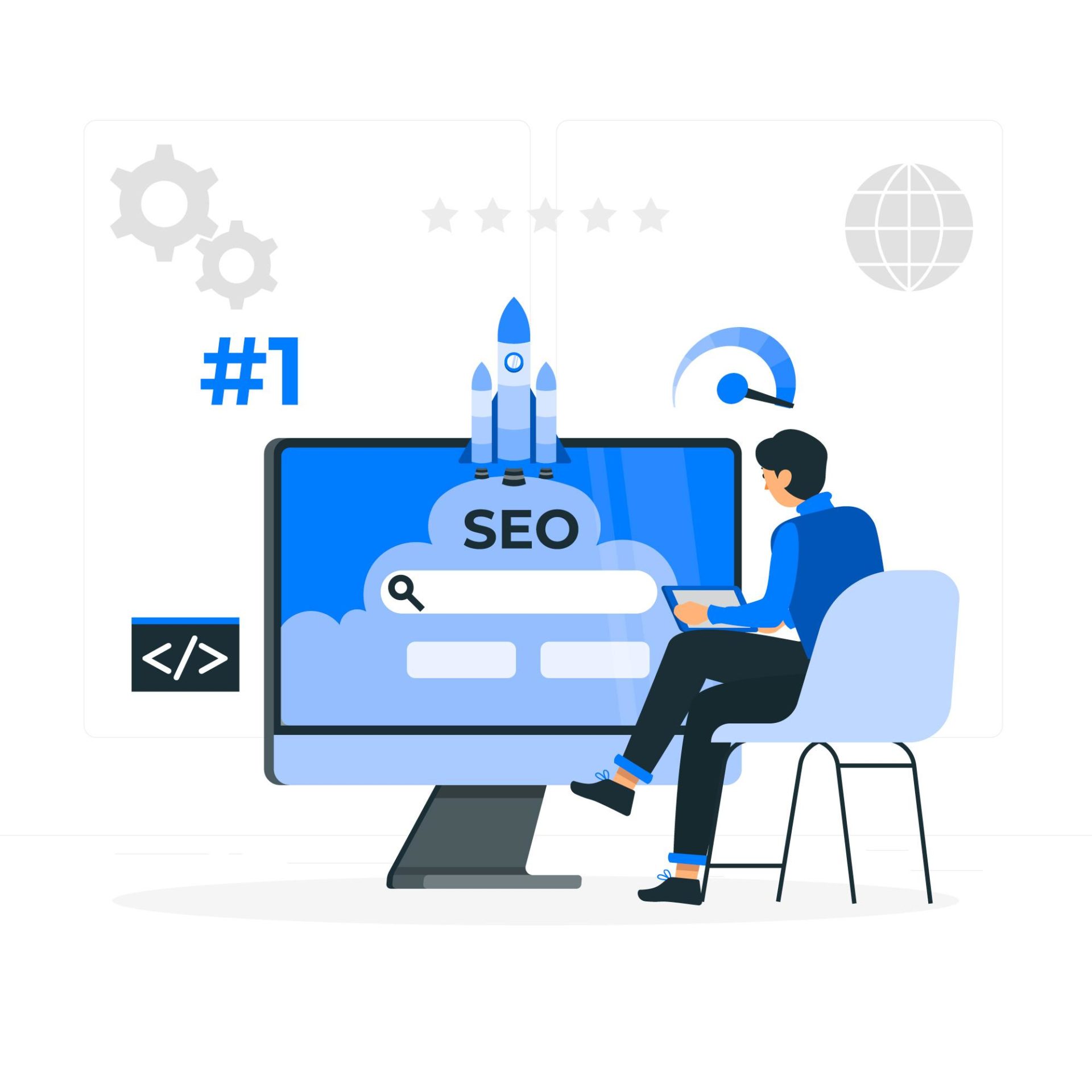When someone mentions Search Engine Optimization, you most likely think of keywords (SEO). However, as search engines become more sophisticated, so do the algorithms that rank websites. They consider more than just keywords, such as visuals and site performance.
Unrelated images that take quite a long time to load or are hard to identify by search engines will not help your SEO. On the other hand, adequately termed, fast-loading, and relevant visuals can bring traffic to your site and increase your search rank.
In this article, we’ll delve deeper into the concept of picture optimization and explain why it’s crucial. In addition, we’ll go over 5 tips for transforming pictures into strong tools for your website.
What Is Image Optimization?
Image SEO is the process of optimizing pictures on websites to make them (images) more appealing and accessible to search engine crawlers.
Search engines attempt to interpret the material on a website to give their consumers the most precise and effective search results. In the same way, these algorithms try to make meaning of the visuals as well.
This process ensures that the images used on a website do not hinder or slow down the page speed, have acceptable tags, and are of the appropriate file size and type. This assists the search engine in providing the relevant context for an image.
Why Is Image Optimization required?
Image optimization contributes to faster page loads and a better user experience. It is one of the on-page SEO tactics that can significantly impact a website’s ranking. Furthermore, if the image ranks well in Google’s image search segment, there is a chance that organic sessions will be directed to your website, which will aid in improving the traffic flow from organic search.
Before we go into optimization tips, let’s take a closer look at the significance of optimizing online images:
Accelerated Page Speed
The time it takes for a webpage or website to load should be as short as possible. Keeping users waiting because you have a media-rich web page can turn them off. As a result, image optimization is critical in reducing page load time. Images typically carry most of the weight of a website or webpage, and optimizing them can significantly improve page loading time.
Image optimization is a strategy for delivering high-quality photographs in the correct format on web pages while keeping the image as compact as possible.
Improved User Experience
As previously said, visitors are more likely to leave a website if the site takes too much time to load. Now that you understand what image optimization is, you can apply it holistically to improve user experience.
A webpage should optimally load and display in two-three seconds at the most. If your website has effective image optimization done, the loading time will be nearly the same among all types of devices utilizing the same internet connection. This is the most important pillar in improving the user experience of your website.
It is critical to ensure that your website loads quickly, not only on PCs but also on mobile phones and tablets. This would encourage the user to not only stay a bit longer on your website but also to investigate the services and products available.
Higher SEO Rankings
Page-load speed is a well-known component in influencing search engine rankings for websites. Google has also begun to consider website load time as an important factor in deciding page rankings. Many websites found it difficult to navigate around the whole development, and they had to boost their image optimization strategy to ensure that their page load speed was as fast as possible.
This demonstrates the need to perform image optimization to its greatest extent before or after publishing a website to maintain search engine rankings. Any digital marketer understands the significance of a good search engine ranking for any website.
With good SEO rankings, your website not only has a better chance of getting clicked on than your competitors’ website, but it also has a better chance of making a favorable influence on visitors by providing a holistic user experience, which is important in and of itself.
The following section delves deeper into this.
Increased Conversions
The direct result of improved search engine rankings is increased traffic to your website. This means you’re drawing more leads to your webpage or website, the number of users is growing, and there are more prospects for conversions. According to one survey, 79% of visitors dissatisfied with the page load time would not return to the same site. This demonstrates why image optimization is a critical component of designing and maintaining any webpage.
Visitors are encouraged to share your website with their networks who may be interested in the same issue if it is properly optimized and has high-quality content (including pictures). This increases the number of site visitors and the likelihood of conversions.
Five Tips To Ensure You Optimize Your Photographs Correctly
1. Create Your Own Images
The days of filling a website with stock pictures and not worrying about copyright or uniqueness are long gone. Yes, they are readily available and accessible, but the problem is that they are used on far too many websites. Even if you fully optimize such photos for SEO, they will not result in ranks.
Your photographs should be unique and utterly relevant to the topic covered on the page. With a plethora of free graphic design templates accessible for custom image development, you may create unique images for improved user experience and engagement.
Furthermore, because they rank on relevant queries, original images provide another opportunity for your material to appear as Image Packs in Google’s Featured Snippets.
2. Optimize Your Images
Now comes the hard work. Once you’ve created (or decided to use a stock image anyway) the photo of your choosing, you need to optimize it to rank as high as possible. Here’s how:
Image/File Size
This is proportional to the website’s speed. The larger the size, the longer it will take to load, which will harm your overall website and image SEO and your engagement and bounce rates. As a result, the lighter and smaller the picture, the better your site’s performance.
However, remember that when you reduce the size of a picture file, the quality also suffers. So, the bottom line is always to reduce the size of the image file as much as possible while maintaining quality.
Formats
Choosing the proper picture format is among the least technical ways to impact image SEO substantially. JPEG, WebP, PNG, and SVG pictures have advantages based on your website’s demands.
JPEG files are smaller but lower quality, making them suitable for general use. On the other hand, PNG file formats offer superior image quality but bigger file sizes and are better suited for photography and other highly visual websites.
WebP images also provide lossless compression and reduced image sizes that are designed for the web. SVG pictures offer higher quality and relatively small file sizes for simple images such as logos.
Most websites do not require photos to be displayed in their entirety. Using excessively large images lengthens load times and consumes more server space than is necessary. As a result, before adding photographs to your site, we suggest compressing and shrinking them.
Name Of The File
There are differing viewpoints on whether the file name of an image matters in SEO. In any case, for the sake of Google’s consideration, it is generally a good idea to name your image appropriately rather than using the default “IMG 4567.jpg” naming method. Label it with something meaningful, separated by underscores or dashes. If your picture is of the latest Samsung Flip phone, for example, name it “Samsung-Flip-8.jpg.” The dashes and underscores will distinguish each keyword if Google analyzes your file names.
Alt-text
The alternative text, also known as Alt-text, is one of your image’s most crucial ranking factors. Because Google cannot see your imagery, you must describe it in detail. This is a fantastic opportunity to include target keywords. If your picture is a stock photo of people gathered over a computer, you can use the alt-text “a group of individuals crowded around a computer.” The ideal technique is to consider how you would describe the picture to a person who cannot see it.
You may use the best free SEO tools to automatically apply image SEO best practices to your picture alt text. It saves you time, enhances the accessibility of your website, and increases organic traffic from search engines.
Caption / Description
The caption is a piece of text that appears beneath the blog image. These parts aren’t as vital as alt-text, but they’re worth including for thoroughness and posterity. You can include more remarks in the description form entry, including how the image was taken or where it came from. If you do utilize a caption, make sure to include pertinent details or acknowledge the original source.
3. Add Image Sitemap
An image sitemap is a form of XML sitemap that exists solely to assist Google in crawling images on your website. Image XML sitemaps, unlike regular sitemaps, do not require links to specific pages; instead, they rely exclusively on HTML code to identify individual images.
Image sitemaps are distinct from normal sitemaps because photos are more difficult for Google to detect than text. When Google crawls a site, it will capture all text information, but it may be more challenging to determine what is going on with images.
This makes it more difficult for photos to contribute to your ranking. However, picture sitemaps can help with this. They can be an excellent technique for assisting you in ranking better in search results, which also includes Google Images.
Including an image The XML sitemap gives search engines more information about our photographs and allows them to find pictures that their crawlers may be unable to discover.
These sitemaps serve as a lighthouse to guide crawlers to the visual assets we want to be found and indexed.
We can either add image information to current XML sitemaps or construct and deploy a new one specifically for photos.
Always double-check that the sitemap is formatted correctly and passes all validation checks.
It is recommended to include multiple picture sitemaps because this aids in finding any indexing issues.
4. Check That The Surrounding Text Matches The Images
It is unlikely that adding random graphics to a website or post will result in valuable content for your visitors. Images should be helpful and relevant, adding context and visual appeal to your site.
You can ensure that photos are SEO-relevant by inserting them near relevant content and keywords. This positioning can also assist with image search, delivering more visitors to your site.
Strategic image arrangement is also beneficial for proper page flow. Visitors will not have to scroll back and forth to see samples and reference photos.
5. Serve Mobile-Friendly, Responsive Images
As more site traffic comes through smartphones and tablets, and because Google’s algorithm employs mobile-first indexing, crawlers focus primarily on a site’s mobile version responsive design; therefore, usage of responsive images becomes increasingly crucial.
Responsive graphics are easily adaptable to multiple devices and frequently allow viewers to interact with them.
Unresponsive websites are unlikely to provide a good experience on a big screen tv or a five-inch phone. When photos are tiny or take up most of the screen, these websites can be even more challenging to navigate.
By providing multiple picture copies, visitors’ browsers may determine the proper graphic size for each user and eliminate awkward placements.
Conclusion
Everything will start to fall into place if your material is good, along with all relevant, original, high-quality images, and you follow the basic rules (above).
Image SEO is an important aspect of your total SEO efforts, and you should not disregard it if you want to stand out from the crowd. Image SEO may appear simple, but it requires meticulous attention to detail. This can be a time-consuming process that sometimes necessitates expert services.
So, whether you handle it in-house or work with a professional, image SEO must always be done!
Vaibhav Kakkar
Latest posts by Vaibhav Kakkar (see all)
- 5 Tips To Optimize Images For SEO And Higher Rankings - December 19, 2022





